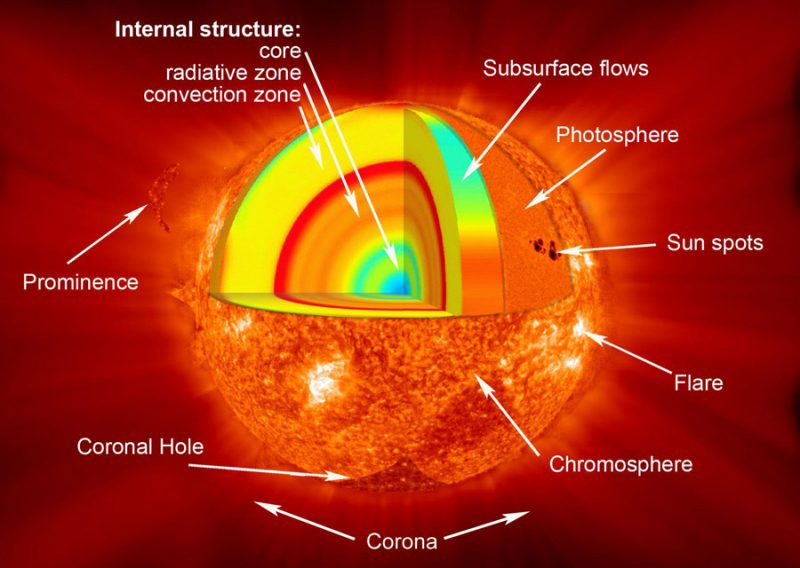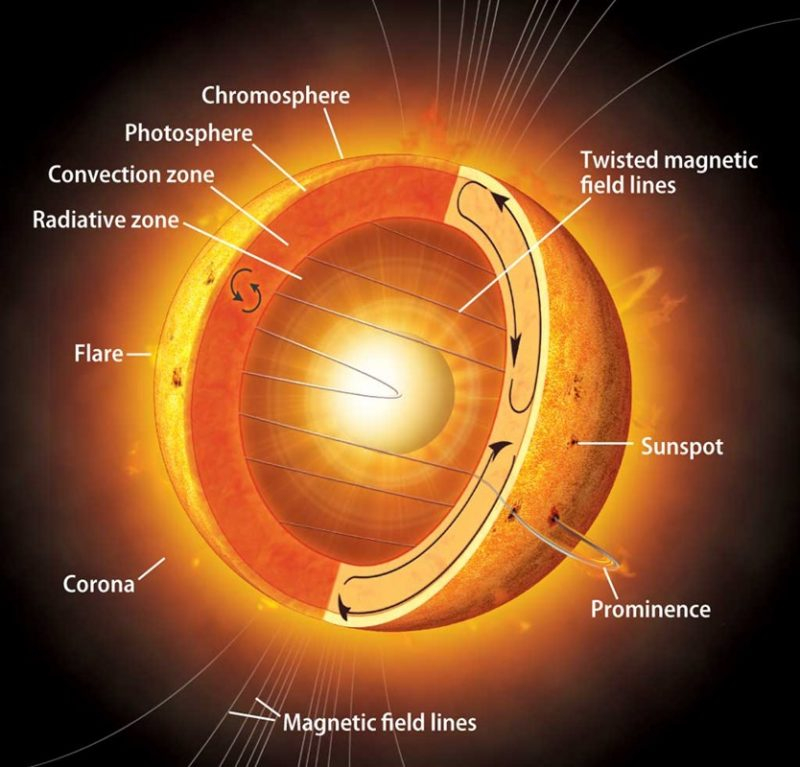Sun Has An Internal Structure
There are various zones and strata in both the sun and its atmosphere. The core, radiative zone, and convection zone make up the solar interior from the inside out. The photosphere, chromosphere, transition region, and corona make up the solar atmosphere above that. The solar wind, a gas discharge from the corona, is located further away.
The core of the sun reaches from its nucleus to around one-fourth of its surface. Even while it only occupies around 2% of the sun's volume, it has a density that is over 15 times that of lead and contains approximately half of the sun's mass. Next is the radiative zone, which spans from the core to 70% of the way to the sun's surface, accounting up 32 % of the sun's volume and 48% of its mass. This zone is where light from the core is scattered, and it can sometimes take a million years for a single photon to pass through.
With a height of up to the sun's surface, the convection zone accounts for 66% of the sun's volume but less than 2% of its mass. This region is dominated by roiling gas "convection cells." Granulation cells, which are roughly 600 miles (1,000 km) broad, and super granulation cells, which have a diameter of 20,000 miles (30,000 km), are the two main types of solar convection cells.
The photosphere, the sun's bottom atmospheric layer, is where the visible light comes from. Although the majority of the light enters through the bottom third, it is just around 300 miles (500 km) thick. The photosphere has a temperature gradient from the bottom, where it is 11,000 F (6,125 C), to the top, where it is 7,460 F (4,125 C). The chromosphere follows, which is hotter, reaching temperatures of up to 35,500 F (19,725 C), and is reportedly comprised entirely spicules, which are spiky structures that are generally 600 miles (1,000 km) across and up to 6,000 miles (10,000 km) high.
Following that is the transition region, which is heated by the corona above it and emits the majority of its light as ultraviolet rays. It is between a few hundred and a few thousand miles thick. The extremely hot corona, which is located at the top, is made up of features like loops and streams of ionized plasma. The corona typically has a temperature range of 900,000 F (500,000 C) to 10.8 million F (6 million C), but when a solar flare occurs, it can even reach tens of millions of degrees. The solar wind expel material from the corona.










